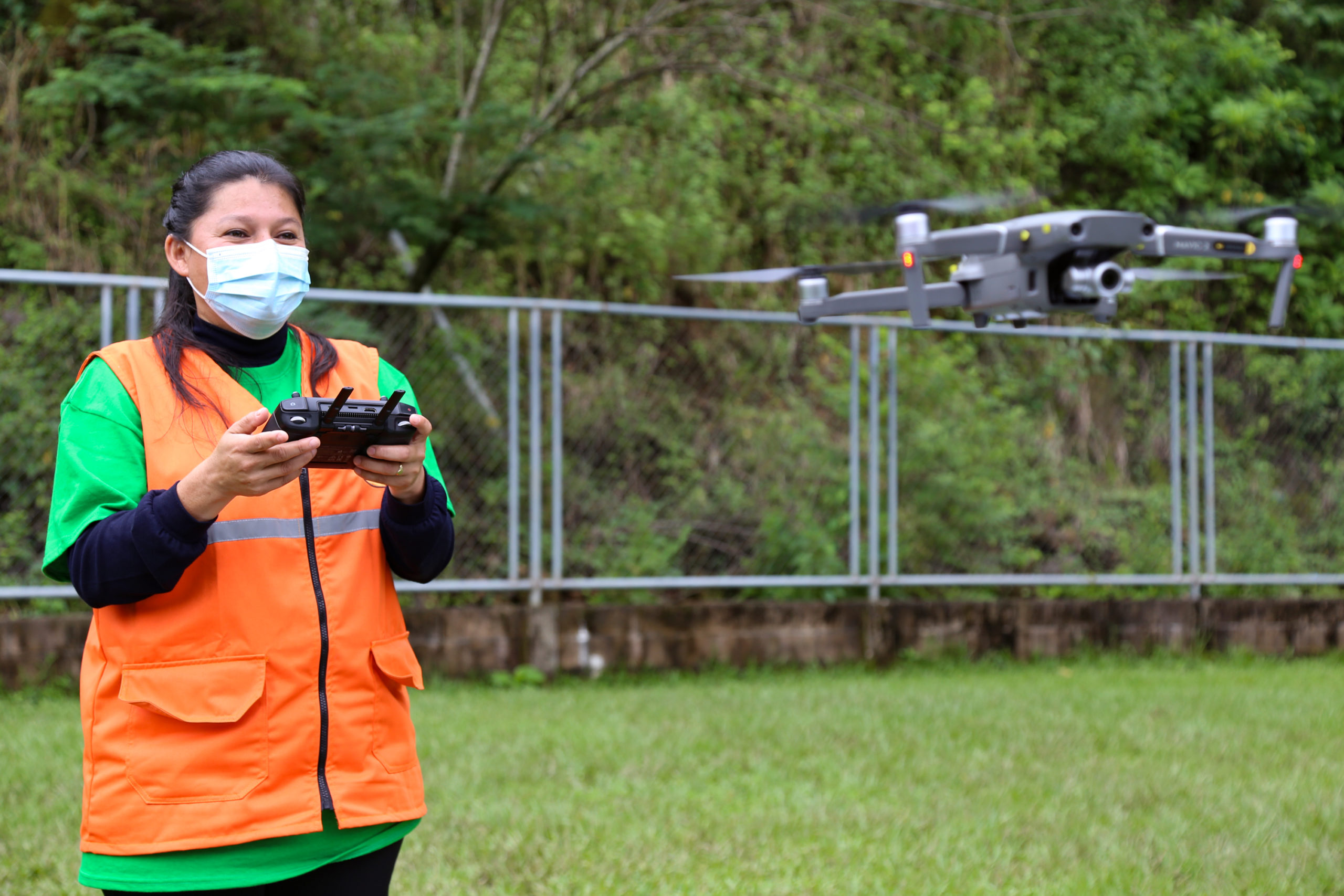
In the dry corridor of Central America, persistent drought—interrupted by violent storms that do further damage to crops—is driving farmers from land they’ve cultivated for generations. The sobering conditions created by the climate crisis are driving communities to explore a wide variety of solutions to reduce risks and increase adaptation efficiencies. Here, on a clear day in October outside the town of San Antonia del Mosco in El Salvador, seven women have gathered in an open field for a practice session with a new tool for predicting the future: a drone.
Ana Hernandez has been an avid participant in a series of projects organized by Oxfam and partners that are focused on helping women take the lead in reducing disaster risks. When she’s not cultivating her land and caring for her two youngest children, Ana is coordinating her town’s civil protection commission, participating in women’s leadership initiatives, and taking university courses to deepen her knowledge of disaster-related topics.
So where do the drones come in? They’ll enable the women to monitor water levels in the rivers, crop growth in the fields, and areas badly affected by drought—without navigating the rough terrain they’d otherwise need to travel. And in emergencies like floods, they can help locate people whose lives may be in danger.
“In my community there are 200 women taking part in projects based at our multi-threat center,” says Hernandez, referring to an Oxfam-funded base of operations. “They’re working on civil protection commissions and participating in agricultural field schools. Women have so much energy and capacity, and there are no limits to what we can learn,” she says. “My big dream is to see all the women in my community trained and empowered. I feel that we are achieving it.”
This story is excerpted from Taina Moreno’s article for Oxfam America, which you can read in full online.
